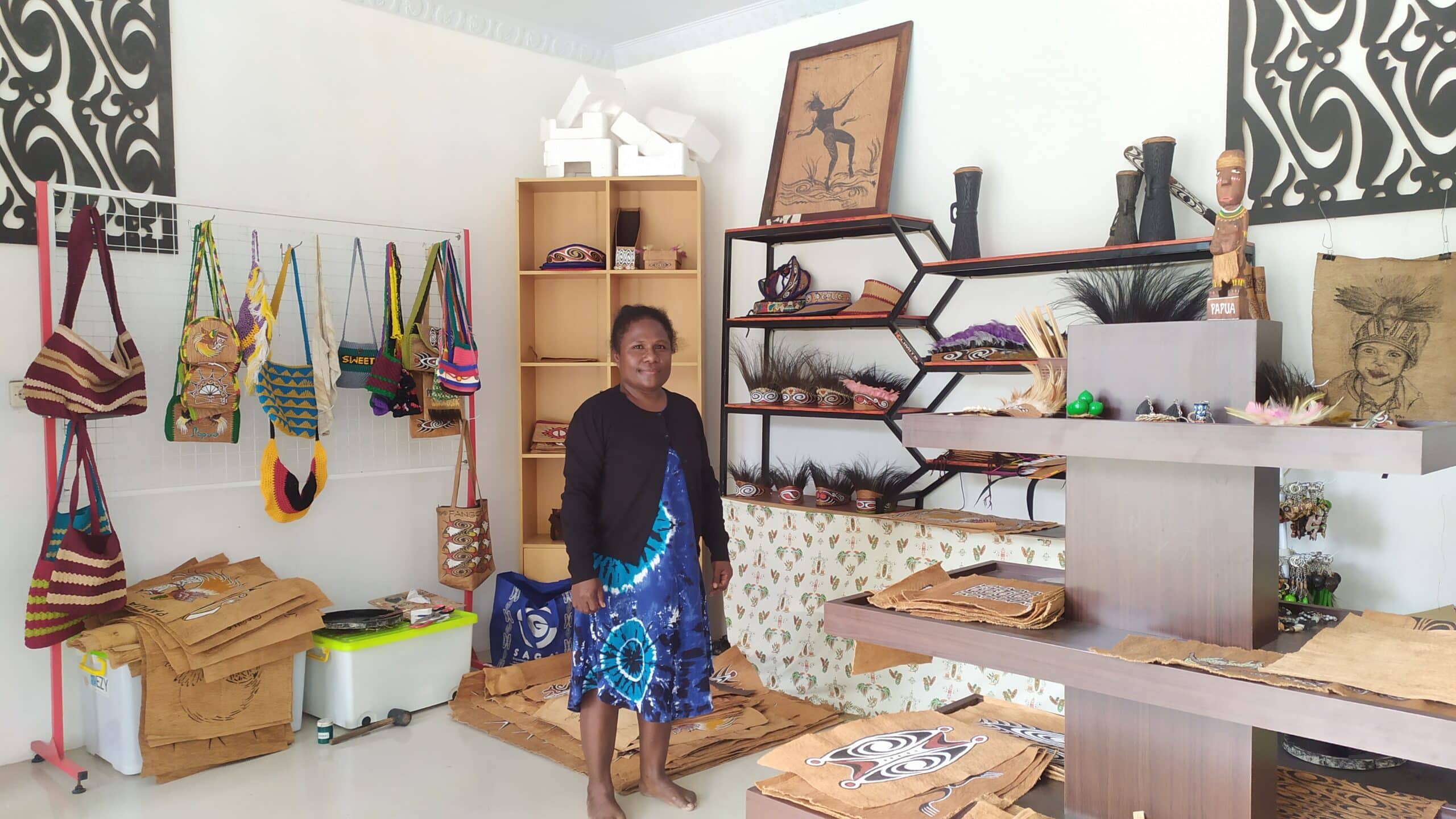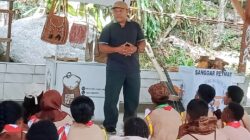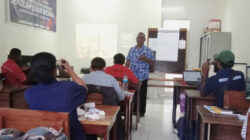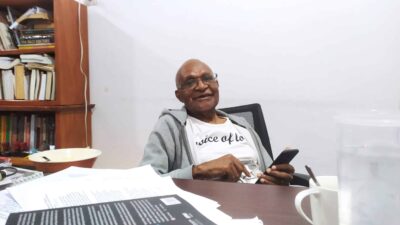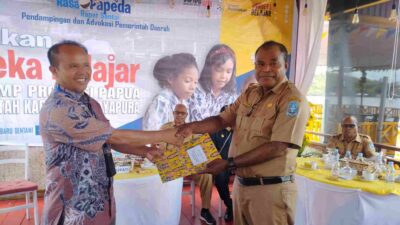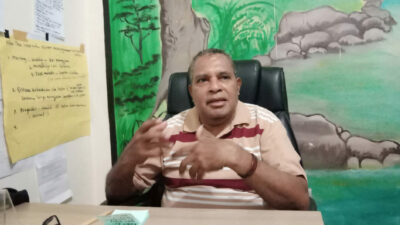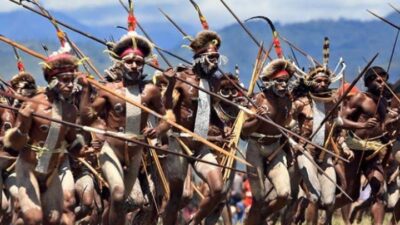Sentani, Jubi – Sentani is not only renowned for the beauty of its lakes but also for the Khombouw wood skin painting art from Asei Besar Village in East Sentani. These paintings are available at the Fansoway Art Gallery on KhalKote Street, East Sentani District, Jayapura Regency.
At first glance, Fansoway Art Gallery resembles any souvenir shop. However, it displays various artworks and crafts typical of the Asei tribe in Asei Besar Village. Asei Besar Village is well-known as a producer of high-quality wood skin paintings. The Khombouw wood is said to come from the Khombow trees around Lake Sentani. The painting motifs depict symbols of life and livelihoods of the Indigenous Papuan in Sentani.
Tresia Ohee (40), Coordinator of Fansoway Art, stated that the painting is a cultural heritage passed down by ancestors and is still preserved, upheld, and safeguarded by the next generation in Asei Besar. Besides its economic value and cultural promotion, according to Tresia Ohee, the wood skin paintings have also become a medium to introduce the tradition and identity of the native Sentani people to outsiders or those curious to learn.
“It is not just about selling [the wood skin paintings], but the most important thing is that we preserve our culture. It is our dignity and identity, so whenever there is a painting like this anywhere, people know it is from Asei Besar Village, which makes us proud,” said Ohee.
Various motifs of wood skin paintings are available at Fansoway Art Gallery, such as Cenderawasih (Bird of Paradise), Sentani women dancing, a group of men hunting at Lake Sentani, and others. All paintings use typical base colors of red, black, and white on light brown wood skin. These paintings speak to visitors and buyers about the uniqueness and richness of the traditions and culture of the community in Asei Besar Village.
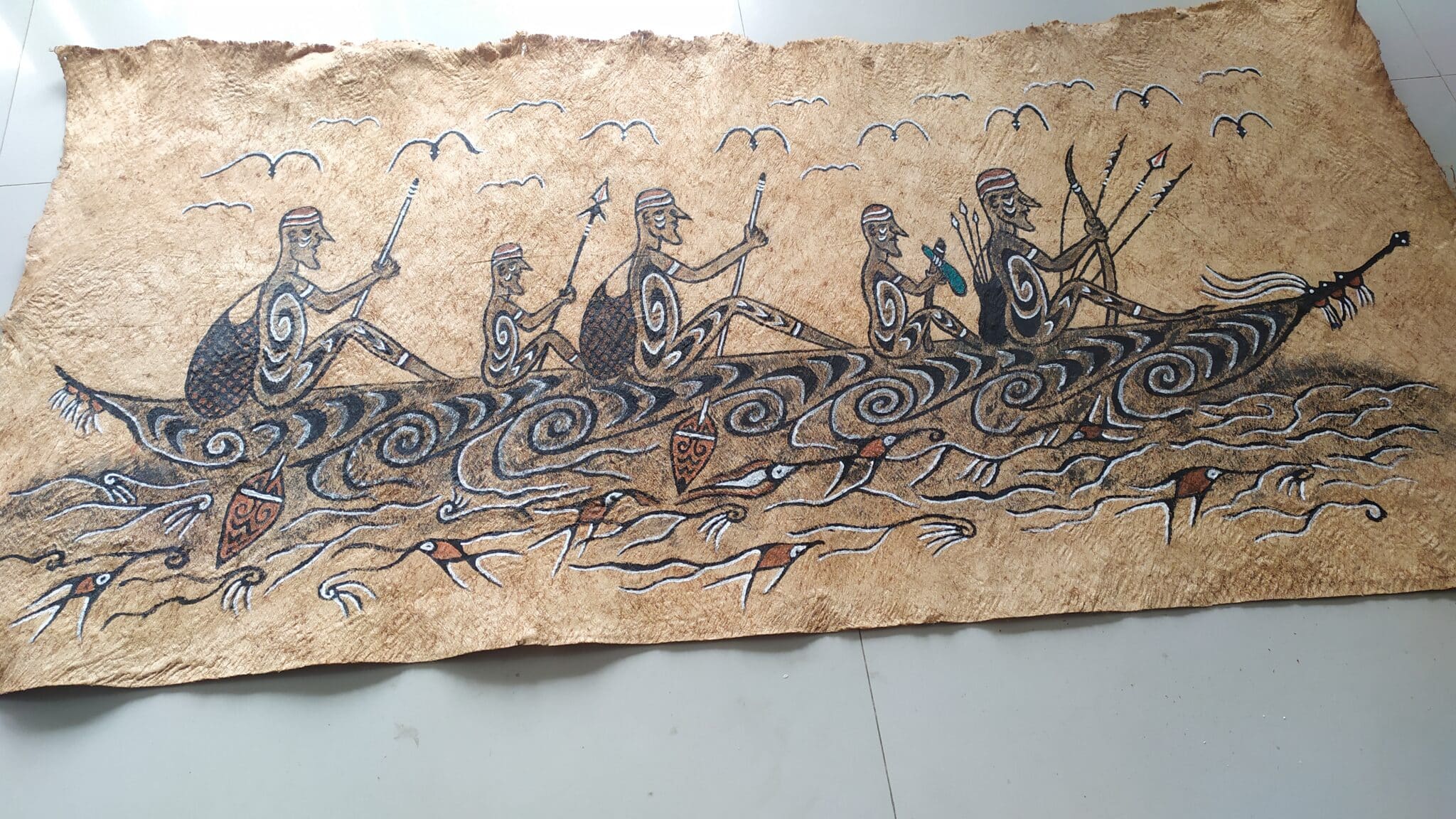
Ohee explained that the tradition of painting on wood skin inherited from ancestors has been successfully preserved. Apparently, the strokes of black, white, and red on the Khonbouw wood cannot be replaced because they hold special meanings. For example, the Cenderawasih painting still uses black, white, and red, with the addition of green-yellow to match the colors of the bird.
“The black color is usually obtained from charcoal or burnt clay pots. The white color is from lime, which is usually used for chewing betel nuts, and the red color is from the soil. These are the basic colors for painting on wood skin,” she said.
In addition to paintings, other crafts are also exhibited in the gallery, such as wallets, tissue holders, file holders, hats, bags for mothers, casual bags, maps, and school bags for children. All of these are made from Khombouw wood skin using a small amount of thread embroidered to strengthen them. The paintings and crafts are truly captivating, with textures that are visually appealing.
Tresia Ohee recounted how the group of wood skin craftsmen from Asei Besar Village produces all these crafts. From wall decorations with various motifs inspired by the traditions and culture of the Asei tribe, to practical needs such as tissue holders, file holders, hats, bags, maps, and school bags. There are also casual bags knitted with wood skin thread combined with synthetic thread.
Ohee vividly remembers how she has been selling and offering her father’s wall paintings since she was a child, whenever there were visitors or guests from outside coming to Asei Besar.
According to her, painting on wood skin has become a part and daily habit of the people in Asei Besar Village, even since childhood. She believes it is rather innate and habitual from birth, passed down through the Asei people. Children from Asei, regardless of which village, are capable of painting on wood skin. Meanwhile, modern products such as embroidering bags, hats, and crowns are taught to children as additional skills.
Affordable Prices
People can purchase crafts from Asei Besar according to their preferences and abilities. Fansoway Art Gallery offers affordable prices. For example, wall decorations range from Rp 50,000 to over Rp 1 million depending on size. Bags range from Rp 50,000 to Rp 500,000, File holders are priced at Rp 100,000, hats from Rp 200,000 to Rp250,000, head crowns with chicken feathers are priced at Rp5 0,000, and those with cassowary feathers range from Rp 200,000 to Rp 350,000. There are also accessories such as keychains, earrings, necklaces, and bracelets priced from Rp 20,000 to Rp 50,000.
“The price for a complete set of traditional attire, from ankle wraps to headwear, for princesses is Rp 1.5 million, and for men Rp1 million. The price for a tifa (traditional Papuan drum) depends on the size, ranging from Rp 500,000 to Rp 3.5 million,” said Ohee.
Fansoway Art Gallery is open every day, except Sundays, from 9:00 a.m. to 9:00 p.m. Papua time.
Not Just a Souvenir Shop
Fansoway Art Gallery is not just an ordinary souvenir shop. Fansoway is one of the groups of Khombouw wood skin craftsmen consisting of 20 people. Members of this group include men and women who are engaged in the art of painting and crafting Khombouw wood skin to produce various accessories.
Usually, men are more involved in painting while mothers produce bags, hats, and crowns using Khombouw wood skin as the base material.
Tresia Ohee explained that the Fansoway Art group was initiated in 2009. Initially, they only had enthusiasm and intentions without sufficient capital. It was only in 2019 that the craft group received assistance from the Provincial Department of Industry and Trade of Papua to establish the Fansoway Gallery.
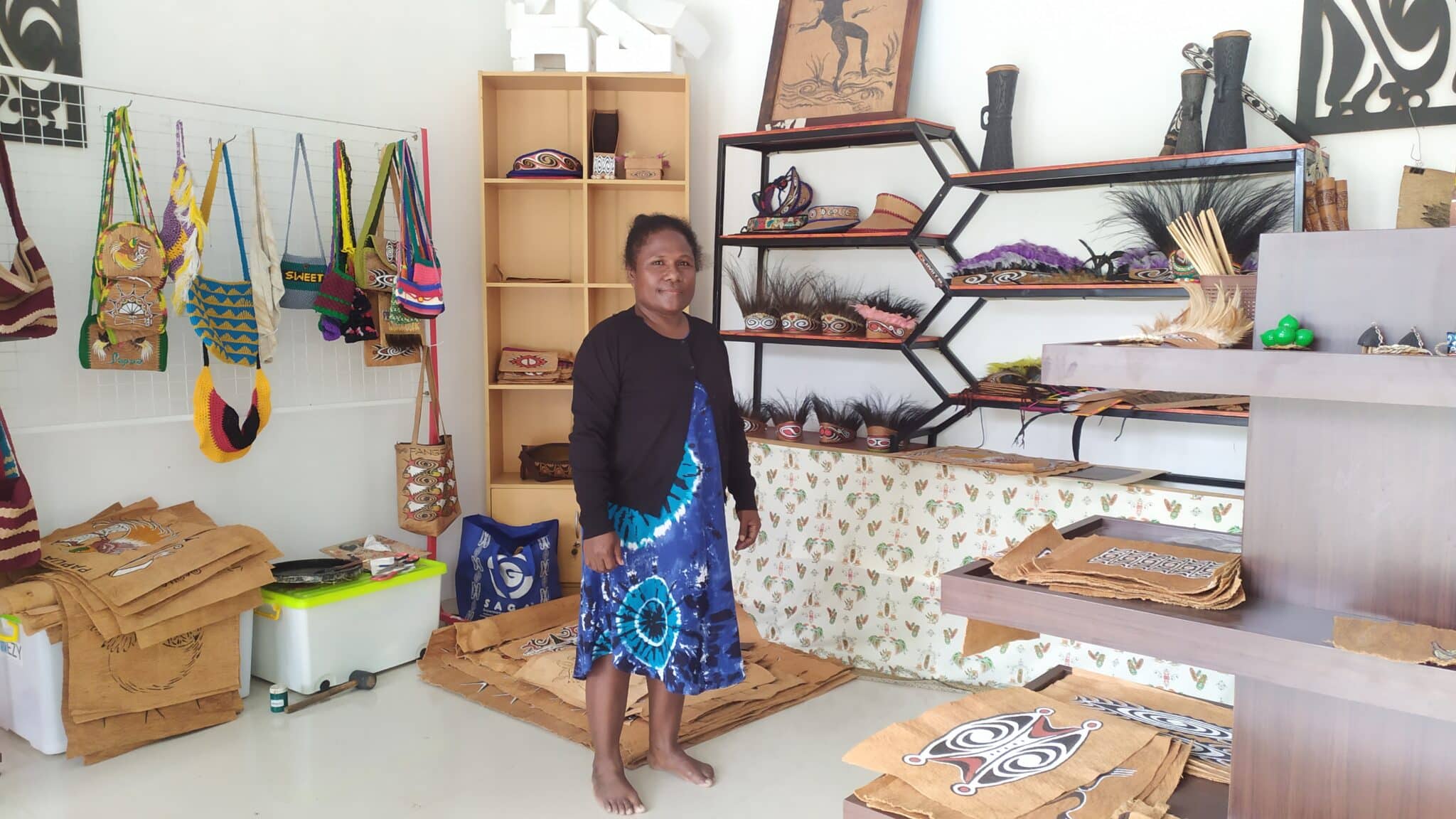
“It all started with our own enthusiasm, but the capital was not in the form of money. The important capital we had was the spirit, the ability to make wood skin, to find wood skin and pound it until it is ready to be painted on. So the initial capital was really nothing but pure intention,” said Ohee, who is also a craftswoman.
She hopes that the government can pay attention to wood skin craftsmen who continue to preserve tradition and culture. Not only for the people in Asei Besar but also for painting and crafting groups in other parts of Papua. She hopes that relevant institutions can develop products and collect works from artists to increase enthusiasm for preserving painting as culture and tradition.
“Our big hope is that relevant institutions working on art and culture in Papua can come and see that we have craftsmen to move forward. Perhaps they could bring us to learn from other areas like Yogyakarta, Bali, Jakarta, Surabaya, and other regions so that we can create even better products to attract attention locally and nationally,” she said. (*)


